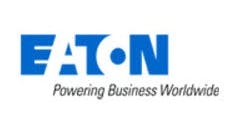Joe Williams, distributed energy resources product manager at Eaton, shares insights on microgrid financing, power purchase agreements and energy-as-a-service.
The value of microgrids is clear — all around the world, microgrids are helping advance energy resilience, sustainability and efficiency. Yet project financing remains one of the most difficult obstacles to overcome to get a microgrid project off the ground.
With over 10 years of experience deploying microgrid systems, we’ve noticed that project financing, defining resilience and navigating the utility interconnection process are common challenges an organization will face when deploying microgrid systems. We discussed defining resilience in an earlier article, and we’ll address the latter of these three challenges in an upcoming installment. Today, let’s zero in on available financing options and how to determine the best approach for your organization.
Broadly speaking, there are two primary methods to finance microgrid projects — direct purchase and power purchase agreements (PPA). Each approach has its own unique benefits and purpose:
- Direct purchase is just what it sounds like, with the site owner buying the system from a solutions provider. The solutions provider is often contracted to provide engineering, installation services and support operations and maintenance.
- Power purchase agreements, which can be provided under an energy-as-a-service model, where the site owner pays a set electricity rate to a solution provider (or financier) that is based on the output and performance of the microgrid system.
Are microgrids a capital or operational expense?
Microgrid projects can be treated as either a capital expense under a direct purchase or as an operational expense under a power purchase agreement. Both options should be evaluated to determine the best approach for the particular project and organization.
Capital expenses (CAPEX) are major, one-time purchases of fixed assets used over the long term that are amortized over the life span of those assets, whereas operating expenses (OPEX) are ongoing expenses that are used to support day-to-day business needs and are consumed in the short term. Typically, infrastructure equipment and property are considered CAPEX investments. However, they can be converted to OPEX by utilizing an alternative option for financing.
There are both benefits and challenges with classifying microgrids as CAPEX projects. One of the biggest benefits is taking direct advantage of applicable federal and state tax credits and incentive programs. At the federal level, the investment tax credit (ITC) is a dollar-for-dollar tax credit for solar energy projects or solar-plus-storage projects. The Build Back Better Act is likely to expand the ITC to include standalone energy storage systems and microgrid controllers; since both solar and storage are typically incorporated in microgrid systems, the tax benefit could be substantial. The specific amount of the newly proposed ITC is currently in play as part of the pending legislation.
On the other hand, there are challenges with using CAPEX to finance microgrid projects. Budgets are limited and there are often many competing priorities that can get in the way of large infrastructure projects. This can result in CAPEX-funded microgrid projects getting delayed, shifted in scope or even abandoned.
As an alternative, shifting a microgrid project to an operational expense through an energy-as-a-service model can have substantial benefits including:
- Enabling businesses to focus their CAPEX budget on their core business.
- Guaranteeing energy costs for the term of the contract, often 15 to 25 years.
- Assuring microgrid performance and covering maintenance.
Keep in mind that in an energy-as a-service model, the developer or financer claims the ITC tax benefit. This may not even be relevant for your organization, as the ITC applies to business organizations; nonprofits, like some hospitals and universities, are not eligible to take advantage of the ITC.
Energy-as-a-service microgrid helps power Eaton’s manufacturing site in Puerto Rico
I’ll use Eaton’s manufacturing site in Puerto Rico as an example of how financing decisions play out. We at Eaton are collaborating with Enel X to develop a microgrid at our Arecibo plant in Puerto Rico where we manufacture circuit breakers. The microgrid incorporates 5 MW of solar PV plus 1.1 MW of battery storage and will help reduce our environmental impact, support Eaton’s enterprise-wide goal of carbon neutrality in our operations by 2030 and bolster the site’s energy resilience.
The estimated ROI timeline made the project complex for capital planning, and we decided against CAPEX financing. Instead, we partnered with Enel X — an experienced energy storage developer, software provider and project financier — and focused on the microgrid’s combined environmental, resilience and economic benefits. The project is being financed with a 20-year PPA through Enel X. By shifting our investment to an energy-as-a-service model we’re creating powerful benefits for both our business and the region:
- Resilience: Our Arecibo manufacturing plant will be able to maintain continuous production even if there is a grid outage.
- Financial: We are able to sell excess energy back to the utility through local net metering rules, resulting in utility bill credits, and we are significantly reducing our energy costs.
- Environment: We will reduce greenhouse gases by 4,500 metric tons annually (equivalent to emissions from about 1,000 cars driven for a year). In addition, the project advances Puerto Rico’s Energy Bureau goals to transform the island’s power infrastructure with more renewables and energy storage solutions.
Climate emergencies are increasing in frequency and impact, and energy costs are rising — making sustainable, resilient and cost-efficient power essential. An energy-as-a-service model can make investments in microgrids more approachable — so that community, business and regional energy needs can be effectively addressed — and the power can stay on, no matter what.
Joe Williams is the distributed energy resources product manager at Eaton. Learn more about the Eaton and Enel X microgrid project in Arecibo and stay informed about how Eaton can help address stimulus projects.








